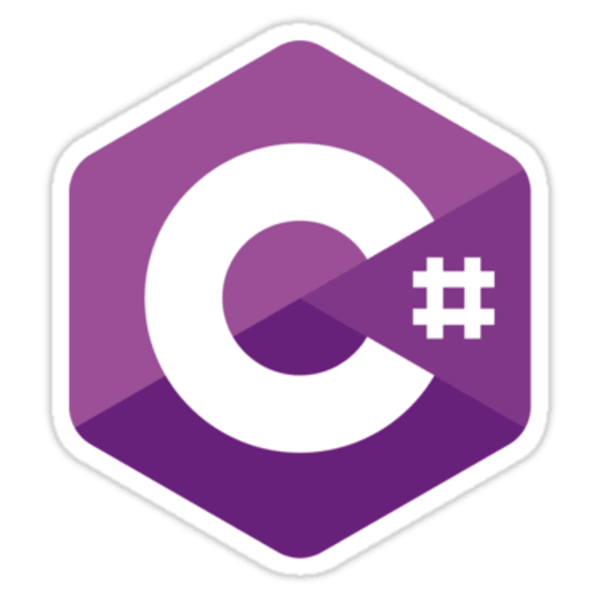
Developed by Microsoft, C# is an object-oriented programming language. It is widely used and popular among programmers for a variety of reasons. For one, it is accepted by both the International Standards Organization (ISO) and the European Computer Manufacturers Association (ECMA). It has features like a standard library, automated garbage collection, proper indexers, and easy-to-use generics. These features allow us to build better applications.
If you are a C# professional and getting ready to give interviews for jobs, you are in the right place. This blog discusses the top interview questions asked in C# interviews.
Prerequisites for learning C#
To learn C#, you must have basic computer knowledge. It includes knowing how to install applications like interpreters, working with command-line, etc. Having previous knowledge of C or Java will also come in handy. Additionally, familiarity with concepts like abstraction, encapsulation, and inheritance is also recommended.
Top C# interview questions and answers
Here are the top C# interview questions and answers.
1. What is C#?
C# is an object-oriented language developed by Microsoft. It is a flexible language with a powerful runtime and is used with the .NET framework to develop websites and applications.
2. Is C# different from C? How?
Yes, C# is different from C. C# is an object-oriented language, while C is more of a procedural language. Another difference is that C does not support automatic garbage collection by Command Language Runtime, while C# does.
3. Tell us the difference between static, public, and void.
Public declared variables are accessible from anywhere in the application. Static declared variables are accessible globally without the need to create an instance of the class. However, they are not, by default, globally accessible. It depends on the type of access modified. Void is a type modifier used to specify the return type of a method.
4. What are the primary reasons for using C# language?
C# language is popular due to many reasons. Some of them are as follows:
-
Part of the .NET framework
-
Easy to learn
-
Object-oriented language
-
Automated garbage collection
-
Builds better and more efficient programs
-
Component-oriented
5. What is an object?
Object refers to a dynamically created instance of a class. It is used to access class methods. The keyword “New” is used to create an object.
6. What is a class?
Class is used to define a type of object. It should not be confused with an object. A class contains all the properties of its objects and instances in a single unit.
7. What are the types of classes in C#?
There are four types of classes in C#.
-
Static class: Static class can be created using the ‘static’ keyword. It contains static data members, static constructors, and static methods. However, you cannot create objects in it.
-
Partial class: Partial class can divide the functionality of one class into multiple ones. The keyword ‘partial’ is used to create it.
-
Abstract class: This class type is restricted and cannot be used to create objects. However, it can be accessed by inheriting it from another class.
-
Sealed class: Sealed class can be instantiated but not inherited by any class. The keyword ‘sealed’ is used to restrict inheritance.
8. What is inheritance?
Inheritance refers to getting some of the properties from a master class. C# does not support multiple inheritances.
9. What are constructors?
A constructor is a member function automatically called when an object of a class is developed to initialize all the data members in the class. It has the same name as its class.
10. Define Jagged Arrays.
A jagged array is an array that has arrays as its elements. These elements can be of different sizes and dimensions. A jagged array is also called an array of arrays.
11. What is the difference between an abstract class and an interface?
Abstract classes cannot create objects. They cannot be instantiated. The interface is similar to an abstract class because its methods are abstract.
Here are a few differences between abstract and interface classes.
12. Define managed and unmanaged code.
Managed code is developed using the Common Language Runtime (CLR) of the NET framework. It can be directly executed in C#.
Unmanaged code is an unsafe code that doesn't run on CLR. It works outside of the NET framework.
13. What is the difference between out and ref parameters?
A ref argument must be initialized before passing it to the method. On the other hand, out does not need to be initialized before passing it to the method.
14. Define serialization.
Serialization is the process of converting an object into a stream of bytes to transport it through a network.
15. What are the different types of comments in C#?
The three different types of comments in C# are as follows.
-
Single-line comments: Single-line comments begin with a double slash. For example, // This is a hello globe program
-
Multi-line comments: Multi-line comments begin with /* and end with */. For example, /* This is a hello globe program */
-
XML comments: XML comments begin with a triple slash. For example, /// This is a hello globe program
16. What is the difference between Break and Continue statements?
The Continue statement is used to jump over a specific iteration and get to the next iteration of the loop. The Break statement is used to break out of the loop at the current point.
17. What are the steps involved in C# code compilation?
There are four steps of C# code compilation.
-
Compiling the source code into a managed module.
-
The created managed module is combined into assembly code.
-
Loading the CLR
-
Execution of assembly using CLR
18. What are the features of C#?
Here are some of the main features of C#.
-
Safely typed and managed
-
General purpose nature
-
Cross-platform friendly
-
Object-oriented
-
Structured language
-
Helps in implementing Destructors and Constructors
-
Platform independent in case of compilation
19. Explain the different methods to pass parameters in a method.
Here are the different methods to pass parameters in a method.
-
Output parameters: This is used to return more than one value on a method.
-
Value parameters: This is the default approach to passing parameters. In this, we pass a copy of the variable to the method. It ensures that the method does not affect the actual parameter's value.
-
Reference parameters: In this, a reference is passed to the same memory location of a variable as that of actual parameters. Therefore, any change to the formal parameter will also happen in the actual parameter.
20. What is the difference between an Array and ArrayList in C#?
-
An array refers to the collection of similar variables under one name. ArrayList is a collection of objects capable of being indexed separately.
-
The memory allocation is fixed in an array. However, it can be increased or decreased in ArrayList.
-
The array has items with the same data type. On the other hand, ArrayList can have items of different data types.
21. Name some important IDEs provided by Microsoft for C# development.
Some of the IDEs provided by Microsoft for C# development are as follows.
-
MonoDevelop
-
Browxy
-
Visual Studio Code (VS Code)
-
Visual Studio Express (VSE)
-
Visual Web Developer (VWD)
22. What are the different C# access modifiers?
There are four C# access modifiers.
-
Private access modifier: This method/code can only be accessed within the same class.
-
Public access modifier: This method/code is accessible for all classes.
-
Internal access modifier: An internal method/code can only be accessed by the current assembly point of that class.
-
Protected access modifier: This type of code/method is only accessed by members of the class who declared it protected or by those who inherited it.
23. What are the different types of constructors in C#?
There are five types of constructors in C#>
-
Static constructor
-
Copy constructor
-
Default constructor
-
Private constructor
-
Parameterized constructor
24. What is the interface?
An interface is a kind of class with no implementation. It includes a declaration of events, attributes, and properties.
25. How can the Array elements be arranged in descending order?
Array elements can be sorted in descending order using the Using Sort() and Reverse() methods.
26. What is method overloading in C#?
Method overloading is used to implement polymorphism. It helps you redefine a function in more than one form.
27. What are the different types of arrays supported by C#?
C# supports three types of arrays.
-
Single-dimensional array: This array contains a single row.
-
Multi-dimensional array: This array contains rows and columns. It is also called a Rectangular C# array.
-
Jagged array: Jagged array is also called an array of arrays because all of its elements are arrays.
28. What is the difference between read-only and constants?
A const keyword declares a constant field in the program. Once a variable is declared const, it is not possible to change its value later. On the other hand, a read-only keyword is used after a value is assigned at run time.
29. What are reference types and value types?
A reference type stores the address of the object where the value is kept, while a value type stores data value inside its memory space.
30. Can we override the private virtual method?
No, you cannot override the private virtual method, as it cannot be accessed outside the class.
31. What are the most commonly used exceptions in .NET?
The most commonly used type of exceptions in .NET is as follows.
-
ArgumentException
-
ArithmeticException
-
DivideByZeroException
-
OverflowException
-
InvalidCastException
-
InvalidOperationException
-
NullReferenceException
-
OutOfMemoryException
-
StackOverflowException
32. What is the difference between dispose() and finalize() methods in C#?
The user explicitly uses the dispose() method to free unmanaged resources. On the other hand, the finalize() method is implicitly used by the garbage collector to free unmanaged resources. These resources can include database connections.
33. What is a delegate in C#?
Delegate represents references to methods with a specific parameter list and return type. It is similar to the function pointer in C++.
34. What is the difference between System.String and System.Text.StringBuilder classes?
System.String is immutable, while System.Text.StringBuilder is mutable. It means in System.String, one cannot modify a created string object, while in StringBuilder, one can perform any operations they want on the created object.
In System.String, if a variable's value is modified, a new memory will be assigned to the changed value. In StringBuilder, there is no need to assign new memory even when modifications are made.
35. What are Custom Control and User Control?
Custom controls are generated as compiled code. Being easier to use, they can be added to the toolbox. They can also be added to multiple applications, provided they have shared DIIs.
User controls are similar to ASP, including files. They are also easy to create. However, they cannot be kept in the toolbox. The file extension for this type of control is .ascx.
36. What is an object pool in .NET?
An object pool is a container with objects ready to be used. It also helps track which objects are being used presently and how many are present.
37. What is the difference between the System.Array.CopyTo() and System.Array.Clone()?
In the Copy() method, the source array is copied to the destination array, while in the Clone() method, the array is copied, and a new object is returned.
38. Explain circular references.
Circular reference refers to the lock condition caused by two or more resources depending on each other. In this situation, the resources are unusable.
39. What are generics?
Generics are used to make reusable code classes. This is done to reduce code redundancy and promote better performance and type safety.
40. How can you inherit a class into another class?
Colon is used as an inheritance operator in C#. All you need to do is to place a colon and add the class name.
41. What are custom exceptions?
Custom exceptions are the exceptions used in cases that require handling errors as per user requirements.
42. How can you set a class to be inherited without getting the method overridden?
The class should be set as public to be inherited. The method override can be stopped by sealing the method.
43. What different ways can be used to overload a method?
The different ways of overloading a method are as follows.
-
Change the number of parameters in a method
-
Change the order of parameters in a method
-
Use different data types for parameters
44. What are the differences between method overriding and method overloading?
Here are a few differences between method overriding and method overloading.
|
Method overriding |
Method overloading |
|
This implements runtime polymorphism. |
This implements compile-time polymorphism. |
|
Determined at the runtime based on the object type |
Determined at compile time |
|
The effect is shown at runtime in case of an error. |
The error can be seen at compile time. |
|
It has the same name and the same signature. |
It has the same name but a different signature. |
|
Occurs within the class |
Occurs in two classes with inheritance relationship |
|
Dynamic binding is used. |
Static binding is used. |
45. How can you use nullable types in .NET?
A nullable type can be declared by using Nullable<t>. T refers to the type.
46. Can an array be made with non-standard values? How?
Yes, we can make an array with non-standard values. Use Enumerable.Repeat() to create one.
47. What is the difference between a class and a structure?
The basic difference between a class and a structure is as follows.
|
Structure |
Class |
|
Structures are value types. |
Classes are reference types. |
|
Variables contain structure’s data. |
Variables contain a reference to the data. |
|
Uses stack allocations |
Uses heap allocation |
|
Structure elements cannot be declared as protected. |
Class elements can be declared as protected. |
|
Does not require a constructor |
Requires a constructor |
48. What happens if there is a conflict between method names in the inherited interfaces?
If methods from different interfaces expect different data, there would be a problem. However, there would be no issue if it is about the compiler.
49. What is a multicast delegate?
Multicast delegate refers to a single delegate with multiple handlers.
50. What is the meaning of regular expressions in C#?
A regular expression refers to a pattern used to check whether the input text matches the pattern. Regular expressions are typically called C#Regex.
51. What is thread pooling in C#?
Thread pooling refers to a collection of threads. These threads are created during the multi-threaded application initialization. It helps in performing tasks in the background. Once a thread completes its task, it stands in a queue waiting to be reused.
52. What is LINQ in C#?
Language Integrated Query (LINQ) gives C# the ability to create queries that help retrieve data from the data source.
And that's all from us! Apart from preparing these C# interview questions and answers, you can do a C# certification to prepare better for your interview. All the best!







COMMENT